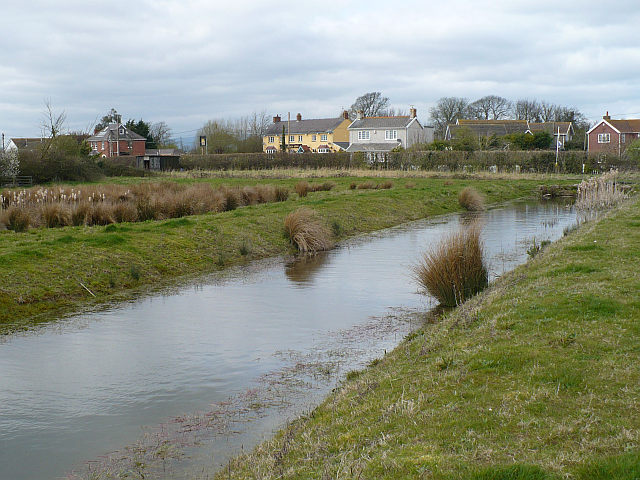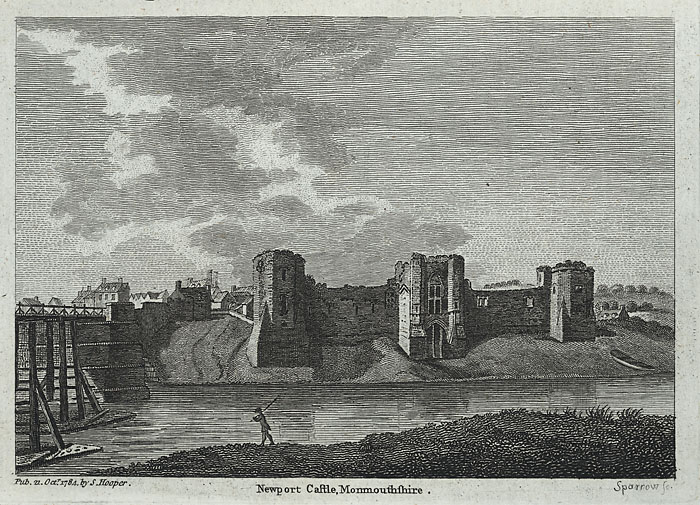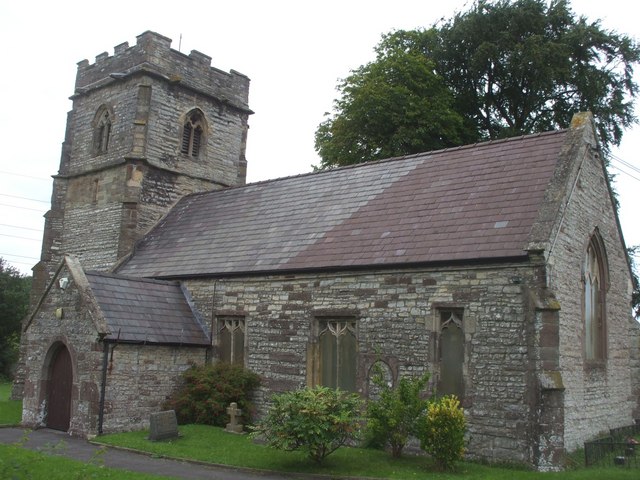|
Goldcliff
Goldcliff ( cy, Allteuryn) is a village, parish and community to the south east of the city of Newport in South Wales. It lies within the Newport city boundaries in the historic county of Monmouthshire and the preserved county of Gwent. Administratively, the community of Goldcliff includes the village/parish of Whitson. The population in 2001 was 233; by 2011 it had risen to 329. Toponymy The name is said to have originated from the siliceous limestone cliff, standing about high, at Hill Farm, rising over a great bed of yellow mica which breaks the level at the shore and has a glittering appearance in sunshine, especially to ships passing in the Bristol Channel. Giraldus Cambrensis, who toured Wales in 1188 refers to the location as "Gouldclyffe" and describes it in Latin as "...glittering with a wonderful brightness". Bradney, Sir Joseph, ''A History of Monmouthshire, Vol 4 part 2: The Hundred of Caldicot'' (Part 2). pub 1914, reprinted 1994, Merton Priory Press. Character ... [...More Info...] [...Related Items...] OR: [Wikipedia] [Google] [Baidu] |
Goldcliff
Goldcliff ( cy, Allteuryn) is a village, parish and community to the south east of the city of Newport in South Wales. It lies within the Newport city boundaries in the historic county of Monmouthshire and the preserved county of Gwent. Administratively, the community of Goldcliff includes the village/parish of Whitson. The population in 2001 was 233; by 2011 it had risen to 329. Toponymy The name is said to have originated from the siliceous limestone cliff, standing about high, at Hill Farm, rising over a great bed of yellow mica which breaks the level at the shore and has a glittering appearance in sunshine, especially to ships passing in the Bristol Channel. Giraldus Cambrensis, who toured Wales in 1188 refers to the location as "Gouldclyffe" and describes it in Latin as "...glittering with a wonderful brightness". Bradney, Sir Joseph, ''A History of Monmouthshire, Vol 4 part 2: The Hundred of Caldicot'' (Part 2). pub 1914, reprinted 1994, Merton Priory Press. Character ... [...More Info...] [...Related Items...] OR: [Wikipedia] [Google] [Baidu] |
Whitson
Whitson is a village on the outskirts of the city of Newport, South Wales. It is located about south east of Newport city centre on the Caldicot Levels, a large area of coastal land reclaimed from the sea. Administratively, Whitson is part of the community of Goldcliff. Origin of the name Sir Joseph Bradney, in his ''History of Monmouthshire''(1922), is undecided on the derivation of the name of the manor and surrounding village, but notes early spellings such as Witston, Widson and Wyttston. It seems most likely, however, that the name came from "Whitestone", similar to the adjacent "Goldcliff". In 1358 the manor was held "...by John de Saint Maur of Penhow of Peter de Cusance by knight service, as of his manor of Langstone". In the 18th and 19th centuries the Phillips family owned a large estate in the parish and lived at what was then called "Whitson House" (now " Whitson Court"). Character Together with the neighbouring larger parishes of Nash and Goldcliff it is o ... [...More Info...] [...Related Items...] OR: [Wikipedia] [Google] [Baidu] |
Nash, Newport
Nash ( cy, Trefonnen) is a village and community to the south of the city of Newport, South Wales, in the Lliswerry ward. Origin of the name The name is thought to originate from a contraction of "An Ash" (tree), meaning literally `place of the ash tree(s)'. This is supported by its appearance in deeds as "De Fraxino" (''fraxinus'' was the Latin name for the ash tree). The Welsh name is ''Trefonnen'', given in older sources as ''Tre'r onnen'', also meaning Town (''tref'') of the Ash (''onnen''). Nash and nearby Goldcliff, as Nash and Goldcliffe, are two of the few villages to appear on the Cambriae Typus map of 1573. Location Nash lies about to the south of the built-up area of the city of Newport, on the Caldicot levels, a large area of land reclaimed from the sea and crossed by drainage channels and reens. In addition to the village itself, the parish contains Uskmouth power stations and part of the Newport Wetlands nature reserve, including its Visitors Centre whi ... [...More Info...] [...Related Items...] OR: [Wikipedia] [Google] [Baidu] |
Caldicot And Wentloog Levels
The Caldicot and Wentloog Levels are two areas of low-lying estuarine alluvial wetland and intertidal mudflats adjoining the north bank of the Severn Estuary, either side of the River Usk estuary near Newport in south east Wales. They are also known collectively as the Monmouthshire Levels or Gwent Levels, and the name Wentloog is sometimes spelled Wentlooge in official publications. The Caldicot Level lies to the southeast of Newport between the River Usk and River Wye and consists of . It is home to Newport Wetlands Reserve. The Wentloog Level lies to the southwest between the River Usk and Rhymney River and consists of . The levels are formed from tidal deposits and alluvium, which have been recurrently inundated and reclaimed from the Severn Estuary by humans since Roman times. They have been patterns of settlement, enclosure and drainage systems belonging to successive periods of use, and are extremely rich archaeologically, with finds from the Mesolithic, Bronze Age ... [...More Info...] [...Related Items...] OR: [Wikipedia] [Google] [Baidu] |
Monmouthshire (historic)
, Status= Historic countyCeremonial county (until 1974)Administrative county (1889–1974) , Start= 1535 , Origin= Laws in Wales Act 1535 , Motto= Faithful to both (Utrique Fidelis) , Image= Flag adopted in 2011 , Map= , HQ= Monmouth and Newport , Replace= Gwent, Mid Glamorgan, South Glamorgan , Arms= ''Coat of arms of Monmouthshire County Council'' , Government= Monmouthshire County Council (1889–1974)Newport County Borough Council (1891–1974)Cardiff County Borough Council (part) (1938–1974) , Code= MON , CodeName= Chapman code , PopulationFirst= 98,130Vision of Britain �1831 Census/ref> , PopulationFirstYear= 1831 , AreaFirst= , AreaFirstYear= 1831 , DensityFirst= 0.3/acre , DensityFirstYear= 1831 , PopulationSecond= 230 ... [...More Info...] [...Related Items...] OR: [Wikipedia] [Google] [Baidu] |
Newport, Wales
Newport ( cy, Casnewydd; ) is a city and Local government in Wales#Principal areas, county borough in Wales, situated on the River Usk close to its confluence with the Severn Estuary, northeast of Cardiff. With a population of 145,700 at the 2011 census, Newport is the third-largest authority with City status in the United Kingdom, city status in Wales, and seventh List of Welsh principal areas, most populous overall. Newport became a unitary authority in 1996 and forms part of the Cardiff-Newport metropolitan area. Newport was the site of the last large-scale armed insurrection in Great Britain, the Newport Rising of 1839. Newport has been a port since medieval times when the first Newport Castle was built by the Normans. The town outgrew the earlier Roman Britain, Roman town of Caerleon, immediately upstream and now part of the borough. Newport gained its first Municipal charter, charter in 1314. It grew significantly in the 19th century when its port became the focus of Coa ... [...More Info...] [...Related Items...] OR: [Wikipedia] [Google] [Baidu] |
Llanwern
Llanwern is a community in the eastern part of the City of Newport, South East Wales. Llanwern is bounded by the M4 and Langstone to the north, Ringland, Lliswerry and the River Usk to the west, the River Severn to the south and the city boundary to the east. The population of the Llanwern community in 2011 was 333). which contains Llanwern village and the western half of the site of Llanwern steelworks. The area is governed by the Newport City Council. The community population dropped to 289 in 2011. The community also includes the area of Glan Llyn. Llanwern House Llanwern House was the home of Lord Rhondda of Llanwern, David Alfred Thomas, who was Minister of Food during the First World War. In 1887, a year before his election to Parliament, Thomas took the lease of the house, where he lived the life of a somewhat unconventional country squire, riding to hounds and breeding prize Hereford cattle. He bought the house in 1900 and acquired the neighbouring Pencoed estate sh ... [...More Info...] [...Related Items...] OR: [Wikipedia] [Google] [Baidu] |
Silures
The Silures ( , ) were a powerful and warlike tribe or tribal confederation of ancient Britain, occupying what is now south east Wales and perhaps some adjoining areas. They were bordered to the north by the Ordovices; to the east by the Dobunni; and to the west by the Demetae. Origins According to Tacitus's biography of Agricola, the Silures usually had a dark complexion and curly hair. Due to their appearance, Tacitus believed they had crossed over from Spain at an earlier date."... the swarthy faces of the Silures, the curly quality, in general, of their hair, and the position of Spain opposite their shores, attest to the passage of Iberians in old days and the occupation by them of these districts; ..." (Tacitus Annales Xi.ii, translated by M. Hutton) Jordanes, in his Origins and Deeds of the Goths, describes the Silures. "The Silures have swarthy features and are usually born with curly black hair, but the inhabitants of Caledonia have reddish hair and large loose-joint ... [...More Info...] [...Related Items...] OR: [Wikipedia] [Google] [Baidu] |
Channel 4
Channel 4 is a British free-to-air public broadcast television network operated by the state-owned enterprise, state-owned Channel Four Television Corporation. It began its transmission on 2 November 1982 and was established to provide a fourth television service in the United Kingdom. At the time, the only other channels were the television licence, licence-funded BBC One and BBC Two, and a single commercial broadcasting network ITV (TV network), ITV. The network's headquarters are based in London and Leeds, with creative hubs in Glasgow and Bristol. It is publicly owned and advertising-funded; originally a subsidiary of the Independent Broadcasting Authority (IBA), the station is now owned and operated by Channel Four Television Corporation, a public corporation of the Department for Digital, Culture, Media and Sport, which was established in 1990 and came into operation in 1993. Until 2010, Channel 4 did not broadcast in Wales, but many of its programmes were re-broadcast ... [...More Info...] [...Related Items...] OR: [Wikipedia] [Google] [Baidu] |
Martin Bell (archaeologist)
Martin Bell is a British archaeologist and academic, who is Professor of Archaeological Science at the University of Reading. Bell is a specialist in environmental archaeology, geoarchaeology and coastal and maritime archaeology. University of Reading. Retrieved 28 September 2015. In 2009, he was elected a Fellow of the British Academy
Fellowship of the British Academy (FBA) is an award granted by the British Academy to leading academics for their distinction in the humanities and social sciences. The categories are:
# Fellows – scholars resident in the United Kingdom
# C ...
[...More Info...] [...Related Items...] OR: [Wikipedia] [Google] [Baidu] |
Cadw
(, a Welsh verbal noun meaning "keeping/preserving") is the historic environment service of the Welsh Government and part of the Tourism and Culture group. works to protect the historic buildings and structures, the landscapes and heritage sites of Wales, to make them available for the public to visit, enjoy, and understand their significance. manages 127 state-owned properties and sites. It arranges events at its managed properties, provides lectures and teaching sessions, offers heritage walks, and hosts an online shop. Members of the public can become members of to gain membership privileges. Aims and objectives As the Welsh Government's historic environment service, is charged with protecting the historic environment of Wales, and making it accessible to members of the public. To this end, in 2010–11 it identified four aspects of its work: it would take measures to conserve the heritage of Wales, its ancient buildings, and monuments; it would aim to sustain the dist ... [...More Info...] [...Related Items...] OR: [Wikipedia] [Google] [Baidu] |
Council For British Archaeology
The Council for British Archaeology (CBA) is an educational charity established in 1944 in the UK. It works to involve people in archaeology and to promote the appreciation and care of the historic environment for the benefit of present and future generations. It achieves this by promoting research, conservation and education, and by widening access to archaeology through effective communication and participation. History and objectives The origins of the CBA lie in the Congress of Archaeological Societies, founded in 1898, but it was in 1943, with the tide of war turning, that archaeologists in Britain began to contemplate the magnitude of tasks and opportunities that would confront them at the end of hostilities. In London alone more than 50 acres of the City lay in ruins awaiting redevelopment, while the historic centres of Bristol, Canterbury, Exeter, Southampton, and many other towns had suffered devastation. In response to a resolution from the Oxford Meeting of the Society ... [...More Info...] [...Related Items...] OR: [Wikipedia] [Google] [Baidu] |








